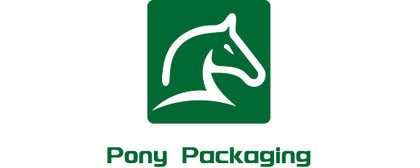
Do thermal printers need special paper?
Yes, thermal printers need special paper to print on --- Thermal Paper.
What is thermal printer?
A thermal printer is a device that prints on thermal paper. The principle of operation is that the print head is installed with a semiconductor heating element, so that when the print head is heated and contacted with the thermal printing paper, desired pattern can be printed out, the principle is similar to the thermal fax machine. The image is generated by heating and chemical reaction on the film.
This thermal printer chemical reaction can be carried out only at a certain temperature, and high temperatures accelerate this chemical reaction: When the temperature is below 60°C, the paper takes quite a long time, even up to several years, to turn into a dark colour; when the temperature is 200°C, this reaction can be completed in a few microseconds.
Working Principle
The principle of a thermal printer is, to overload a transparent film on a light-coloured material (usually paper), then heat the film for a period of time to turn it dark (usually black, sometimes blue). The image is generated by a chemical reaction in the film, which is triggered by heat. This thermal printer chemical reaction can be carried out only at a certain temperature, and high temperatures accelerate this chemical reaction: When the temperature is below 60°C, the paper takes quite a long time, even up to several years, to turn into a dark colour; when the temperature is 200°C, this reaction can be completed in a few microseconds.
Thermal printers selectively heat the thermal paper in defined positions, from which the corresponding graphics are produced. The heating is provided by a small electronic heater on the print head in contact with the thermal material. The heaters are arranged in the form of square dots or strips logically controlled by the printer, and when actuated, produce a graphic on the thermal paper corresponding to the heated element. The same logic circuitry that controls the heating element also controls the paper feed, thus enabling the graphic to be printed on the entire label or paper.
The most common thermal printers use a fixed print head with a heated dot matrix. The print head has 320 square dots, each point is 0.25mm × 0.25mm. Using this dot matrix, the printer can print the point in any position on the thermal paper. This technology has been used in paper printers and label printers.
Thermal Paper
Thermal paper is a special coated processed paper, its appearance is similar to ordinary white paper. Thermal paper has smooth surface, which is made of ordinary paper as a paper base, coated with a layer of thermal colour layer, and it is all coated on the surface of ordinary paper side. The colour layer is made of adhesive, chromogenic agent, colourless dyes (or cryptochrome dyes), as they are not separated through the microcapsules, the chemical reaction is in a ‘latent’ state. When the thermal paper meets the heat of the print head, the chromogenic agent and colourless dyes on the print head will cause a chemical reaction and then make the colour change, which formats the graphics.
When thermal paper is placed in the temperature above 70 ℃, the thermal coating will begin to change colour. The reason for the discolouration is relevant to its composition. Thermal paper coating contains mainly two thermal components: one is a colourless dye or hidden dye; the other is chromogenic agent. This type of thermal paper is also known as two-component chemical thermal recording paper.
Commonly used as colourless dyes: crystalline violet lactone (CVL), fluorescent alkane system, colourless benzoylmethylene blue (BLMB), or spiropyran system and other substances. Commonly used aschromogenic agent: para-hydroxybenzoic acid and its esters (PHBB, PHB), salicylic acid, 2,4-dihydroxybenzoic acid or aromatic sulfone and other substances.
When heating the thermal paper, the colorless dyes and chromogenic agent will cause a chemical reaction to produce colour, so while using thermal paper in the fax machine to receive signals to print or printing directly with a thermal printer, the graphic can be displayed. As there are many varieties of colourless dyes used, the colour of the handwriting appears differently, blue, fuchsia, black and so on.

Thermal Receipt Paper

Thermal Paper Roll
Advantage and disadvantage
Relative to the dot matrix printer, thermal printer has the advantages of fast speed, low noise, clear printing and it’s easy to use. However, thermal printers can not directly print duplex, the print out documents can not be permanently saved---if using the best thermal paper, in good state of light, the document can be saved for ten years.
And pin printing can print duplex---if you use a good ribbon, printed documents can be saved for a long time. But the disadvantage of pin printer is slow printing speed, noisy, rough print handwriting and need frequently replace the ribbon.
If users need to print invoices, pin printing is recommended; if printing other documents, thermal printing will be better.

dot matrix printer
Application
Thermal printing technology was first used in the fax machine, its basic principle is to convert the data received by the printer into a dot matrix of signals to control the heating of the thermal unit, to heat the thermal coating on the thermal paper and expose.
Thermal printers have been widely used in POS terminal systems, banking systems, medical instruments and other fields. Thermal printers can only use special thermal paper, paper coated with a layer of thermal coating, which produces a chemical reaction and discolouration under the heat, similar to photographic film, but this layer of coating is triggered by heat. Taking advantage of this property of thermal coatings, thermal printing technology has emerged.

Fax machine


